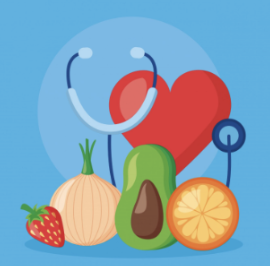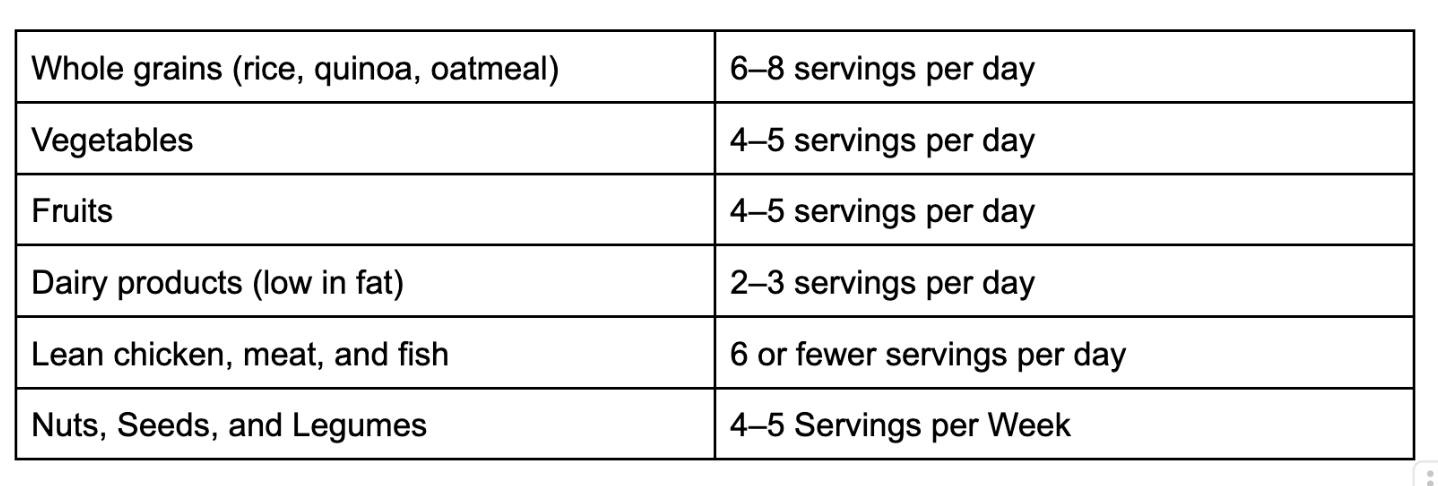A Guide to the DASH Diet
~Written by Archi Dasgupta
Reviewed by Shannon Grant-Hailey, RD, CDN
Content:
1) Understanding Hypertension
2) The Science Behind the DASH Diet
3) Serving Recommendations (2,000-calorie diet)
4) Sample DASH-Friendly Meal
5) The Takeaway
Understanding Hypertension
Hypertension, or high blood pressure, affects nearly one in two adults in the United States, according to the CDC. Often called the “silent killer,” hypertension may not show noticeable symptoms but significantly increases the risk of heart attack, stroke, kidney disease, and other serious health problems.
One of the most effective ways to manage hypertension is through diet. The DASH Diet—short for Dietary Approaches to Stop Hypertension—is a well-researched nutritional plan developed to lower blood pressure and improve heart health.
The Science Behind the DASH Diet
A primary goal of the DASH Diet is to reduce sodium intake, as excess sodium causes the body to retain water in an effort to balance sodium levels in the bloodstream. This leads to an increase in blood volume, which in turn raises blood pressure, putting added strain on artery walls, which can lead to hypertension. The DASH diet enforces a maximum intake of 2,300 milligrams per day, equivalent to one teaspoon of table salt.
In a landmark study conducted by the National Institutes of Health (NIH) involving 459 adults with varying levels of high blood pressure, participants were assigned to one of three dietary plans. The results showed that the DASH Diet was the most effective in significantly lowering blood pressure. Additionally, it helped reduce LDL cholesterol (commonly known as "bad" cholesterol), a major risk factor for cardiovascular disease.
Serving Recommendations (2,000-calorie diet)
The DASH diet emphasizes limiting both refined and alternative sugar sources. Aim to keep your intake of added sugars to no more than 5 servings per week. When cooking, prioritize heart-healthy vegetable oils such as olive, canola, or sunflower oil instead of saturated fats. Red meat should be limited to one or two servings per week, with a serving typically being about 3 ounces.
Sample DASH-Friendly Meal
Herb-crusted baked cod (4 servings)
3/4 cup herb-flavored stuffing
4 cod fillets, 4 ounces each
2 tablespoons honey
Roasted green beans
2 cups green beans, cleaned and trimmed
1 cup cherry tomatoes (about 20)
1 tablespoon minced garlic
2 teaspoons olive oil
1 teaspoon dried basil
1 teaspoon dried oregano
1 teaspoon onion powder
1/2 teaspoon salt
1/2 teaspoon pepper
1 apple
Water
The Take away
Healthy eating is essential for managing heart-related conditions. Backed by doctors and dietitians, the DASH Diet offers a proven path to better health. For personalized support, reach out to Nutrished—we’re here to help you reach your nutrition goals!
Follow us on Social Media below for more free invaluable Health information!

